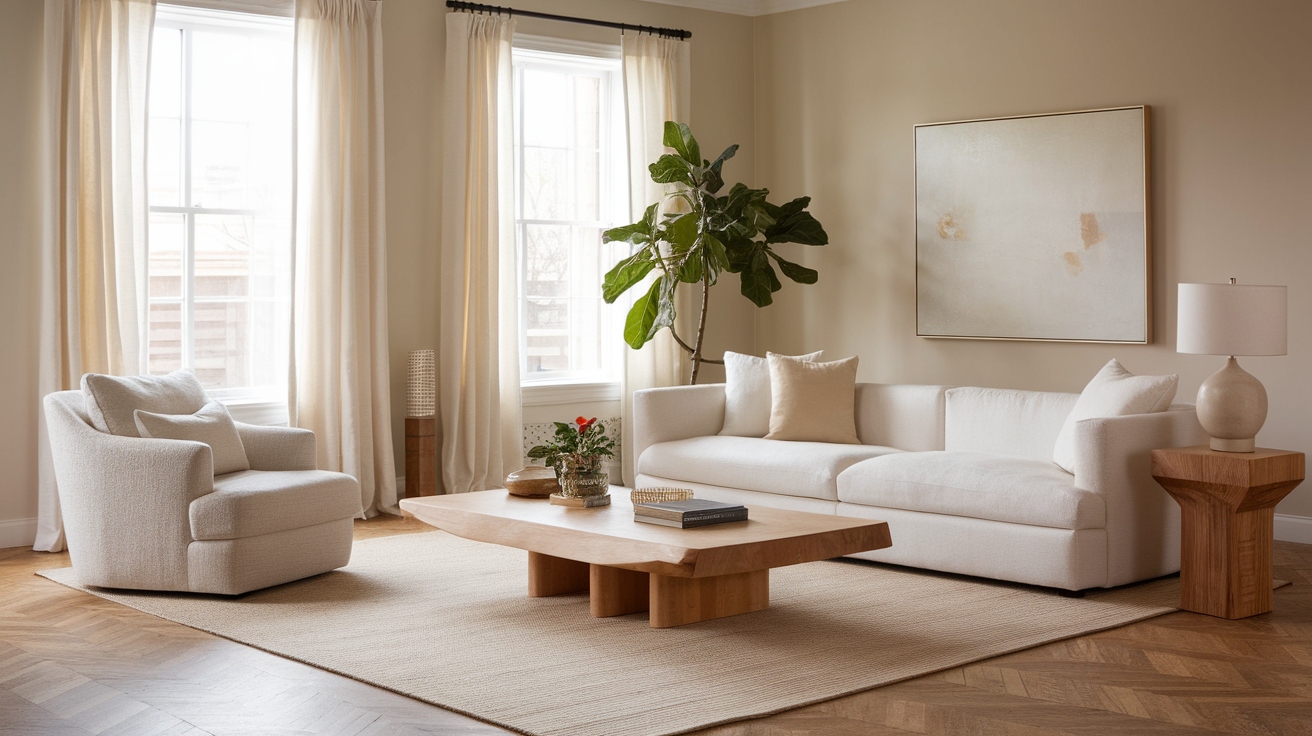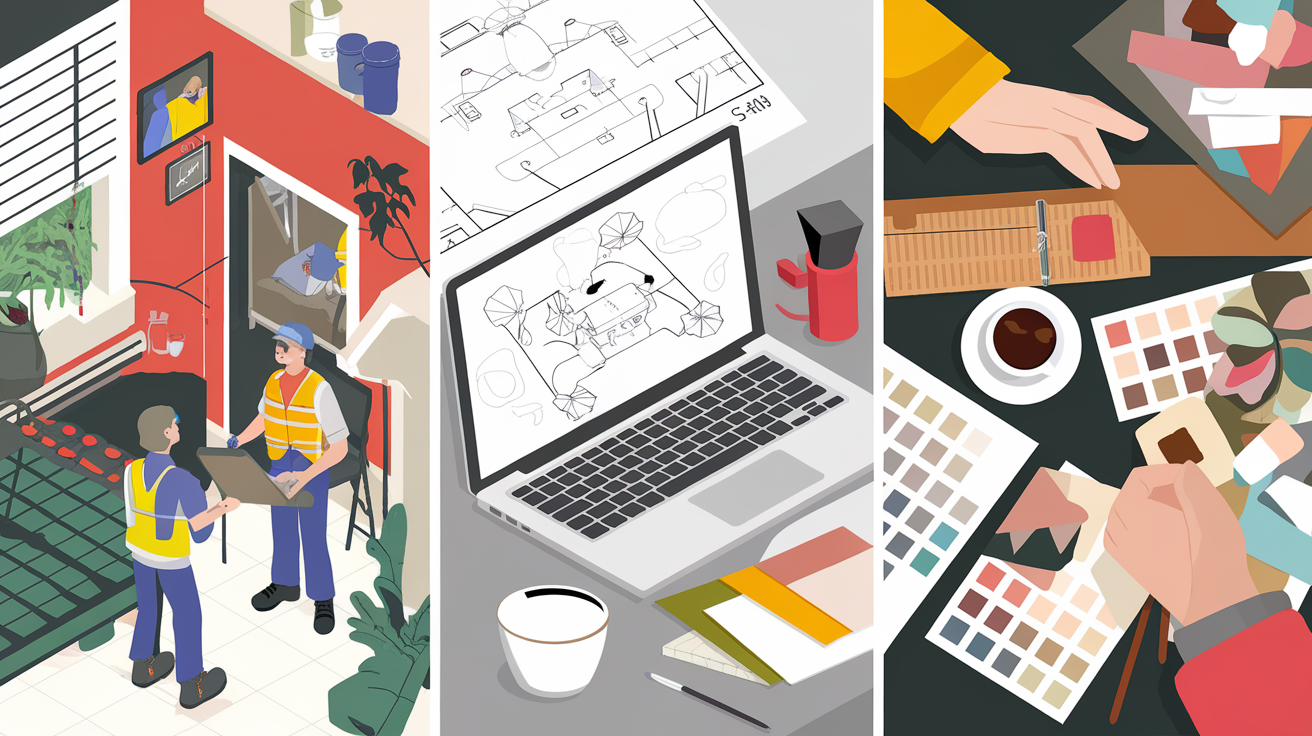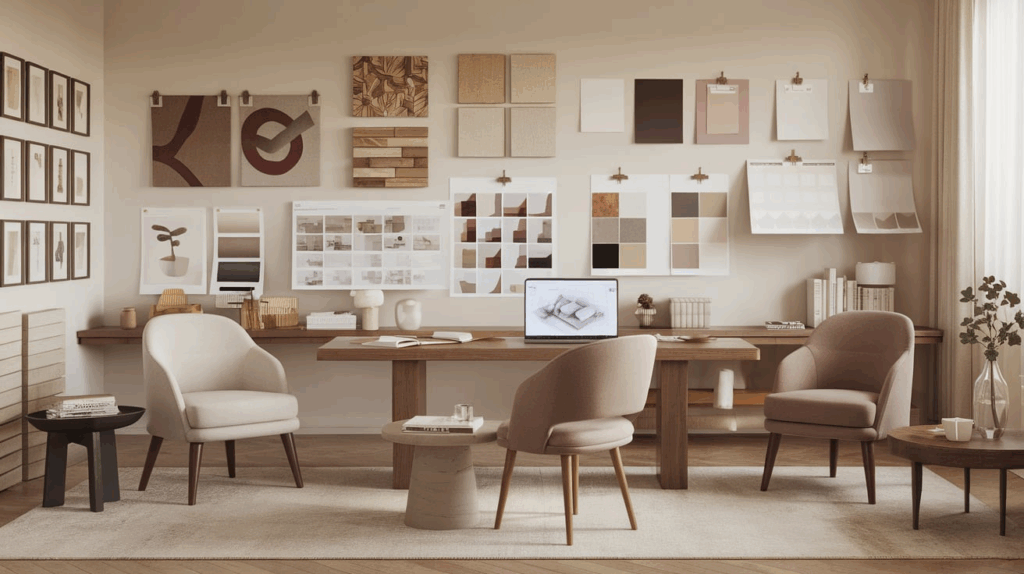When I first heard the term full-service design, I honestly thought it was just about picking furniture and choosing paint colors. But once I experienced it firsthand, I realized it’s so much more.
Full-service design is a complete, hands-on process where a professional handles everything – from early planning and sourcing to contractor coordination, project management, and final installation.
It’s not just about creating a beautiful space; it’s about making the entire journey easier, less stressful, and far more rewarding.
I’ve seen how overwhelming a renovation or build can be without a clear plan and experienced help.
If you’re feeling unsure about what level of support you need or whether full-service design is right for you, this guide will walk you through it step by step, so you can make an informed, confident decision.
What Is Full-Service Design

Full-service design is a comprehensive, start-to-finish approach that covers every aspect of a project.
It typically begins with an in-depth consultation and continues through concept development, sourcing, budgeting, contractor coordination, site visits, and final installation.
Unlike limited or one-time design services, full-service design ensures that all elements – from layout and materials to lighting and furnishings are professionally planned and managed.
This approach enables clients to delegate the time-consuming details while maintaining input and control over the final look and feel.
Full-service design offers a comprehensive approach, providing structure, creativity, and professional support from concept to completion.
What’s Included in Full-Service Design
Every stage of your project is managed in full-service design. Learn what’s included – from layout planning to vendor management and final installation – so nothing is left to chance.
- Initial Design Plans: Floor plans, space planning, mood boards, and visual concepts that guide the entire project from layout to finishes.
- Product Sourcing: Selection of furniture, fixtures, lighting, textiles, and materials – all tailored to the client’s style and budget.
- Budget Development and Tracking: Full cost planning with real-time updates to help stay within budget while maintaining design integrity.
- Vendor and Contractor Coordination: Communication with trades, suppliers, and service providers to manage timelines, deliveries, and on-site work.
- Site Visits and Quality Control: Regular check-ins to oversee progress, catch issues early, and ensure the project stays on track.
- Final Installation and Styling: Complete setup of furniture, accessories, art, and decor so the space is move-in ready and beautifully finished.
The Full-Service Design Process

From concept to reveal, full-service design is structured for ease and efficiency. Each phase is clearly defined, with regular updates and checkpoints to keep everything on track.
1. Initial Consultation and Vision Planning
This phase is all about getting to know the client’s lifestyle, preferences, and needs.
It includes a detailed discussion about how the space will be used, what styles resonate, and any functional requirements.
The goal is to define a clear vision that blends beauty with practicality – so the final design feels personal, not just pretty.
2. Design Plan and Selections
Once the vision is clear, the designer creates mood boards, layout drawings, and detailed finish selections.
This includes paint colors, furniture, lighting, flooring, hardware, and more. All pieces are chosen to work together in style, function, and budget.
Clients review the plan, make any necessary adjustments, and approve everything before ordering begins.
3. Project Management and Installation
This stage involves coordinating behind-the-scenes with vendors, contractors, orders, and timelines.
The designer handles scheduling, tracks deliveries, manages trade work, and ensures everything aligns with the plan.
Clients can relax, knowing the details are covered and any issues are handled professionally, without needing to micromanage the process.
4. The Final Reveal
When everything is installed and styled, the space is ready for the final reveal. This is the exciting moment when the design comes to life.
Every item is in place, every surface polished, and the entire space feels cohesive, intentional, and complete. It’s turnkey-ready and designed to be lived in and loved.
Is a Full-Service Design the Right Choice for You?
Full-service design is ideal for those who want expert guidance throughout an entire project. It’s especially helpful for clients with limited time, complex needs, or a desire for a polished, stress-free result.
- Busy professionals: Minimal time to manage details but want a high-end outcome.
- New homeowners: Need help turning a blank space into a fully designed home.
- Clients planning major remodels: Projects that require coordination across trades and timelines.
- Anyone overwhelmed by design decisions: Prefers a professional to guide selections, orders, and layouts.
- Second-home or investment property owners: Need a turnkey solution with minimal involvement.
Benefits of Full-Service Design
Full-service design offers more than just visual appeal it brings structure, peace of mind, and professional guidance. From time savings to better outcomes, this approach helps deliver a smoother, more satisfying design experience.
- Saves Time: Designers handle sourcing, scheduling, and communication, so projects move faster with less client involvement.
- Reduces Stress: With clear plans and expert oversight, there’s less second-guessing and fewer day-to-day decisions to manage.
- Prevents Costly Mistakes: Accurate plans and vendor coordination help avoid sizing errors, misorders, and delays.
- Creates Cohesive Results: A unified design vision ensures everything, from finishes to furniture, works together beautifully.
- Improves Budget Control: Designers track costs and suggest alternatives to stay on budget while maintaining quality.
Full-Service vs. Virtual Design vs. Basic or A La Carte Design

Each design service offers a unique level of support, from fully managed experiences to DIY plans or one-time consultations. This table breaks down the differences to help you choose the right fit.
| Feature | Full-Service Design | Virtual Design | Basic / A La Carte Design |
|---|---|---|---|
| Level of Involvement | High – designer manages all phases | Low – client manages execution | Medium – client manages most, designer offers input |
| Delivery Method | In-person and hands-on | Remote, usually via email or online platforms | In-person or virtual depending on the offering |
| What’s Included | Everything: planning, sourcing, vendors, install | Design plan, product links, styling suggestions | Individual services like layouts, color consults, or staging |
| Ideal For | Busy clients or full renovations | DIY clients with smaller projects | Clients wanting specific help or design direction |
| Project Management | Yes – designer handles all coordination | No – client manages all orders and installations | No – support limited to selected services |
| Customization Level | Fully customized to space, lifestyle, and budget | Semi-custom; based on templates and client input | Varies by service, usually light customization |
Full Service Design: Questions to Ask
Asking the right questions before hiring a full-service designer ensures you understand their process, pricing, and communication style so there are no surprises once the project begins.
- What services are included in your full-service package?
- How do you charge flat fee, hourly rate, or by phase?
- What is the typical timeline for a project like mine?
- How involved will I need to be during each phase?
- What happens if we run into delays or changes?
- How often will you provide updates or schedule check-ins?
- Do you offer budget tracking or alternative options if pricing changes?
- What sets your full-service design process apart from others?
Asking these questions upfront builds trust, sets clear expectations, and ensures the designer’s approach aligns with your vision, timeline, and level of involvement from the very beginning.
Conclusion
If you’re dreaming of a beautiful, well-executed space but don’t want to juggle contractors, manage deliveries, or make nonstop decisions, full-service design may be exactly what you need.
I’ve worked with clients who felt completely overwhelmed at the start – uncertain about where to begin or how to bring their ideas to life.
Once the process started, they were relieved to have expert guidance and hands-on support every step of the way.
Full-service design isn’t just about style – it’s about saving time, avoiding stress, and feeling confident from concept to completion.
You still have a voice in every choice, but you gain the freedom to enjoy the process without the pressure.
If you’re ready to turn your ideas into a real, livable space beautifully and professionally reach out today and let’s bring your vision to life.
Frequently Asked Questions
Do I need a large budget for full-service design?
Not necessarily. Many designers offer full-service packages at different price points, adjusting selections and scope based on the client’s needs and budget.
Will I lose control over the design process?
No. Full-service design is collaborative. You’re involved in key decisions and approvals, while the designer handles the logistics and details.
How long does the full-service design process take?
Timelines vary by project size, but a typical full-service design project may take several weeks to several months from planning to final installation.
Is full-service design worth the cost?
For many homeowners, yes. It can save time, reduce stress, prevent mistakes, and deliver a more cohesive, professionally finished result.

